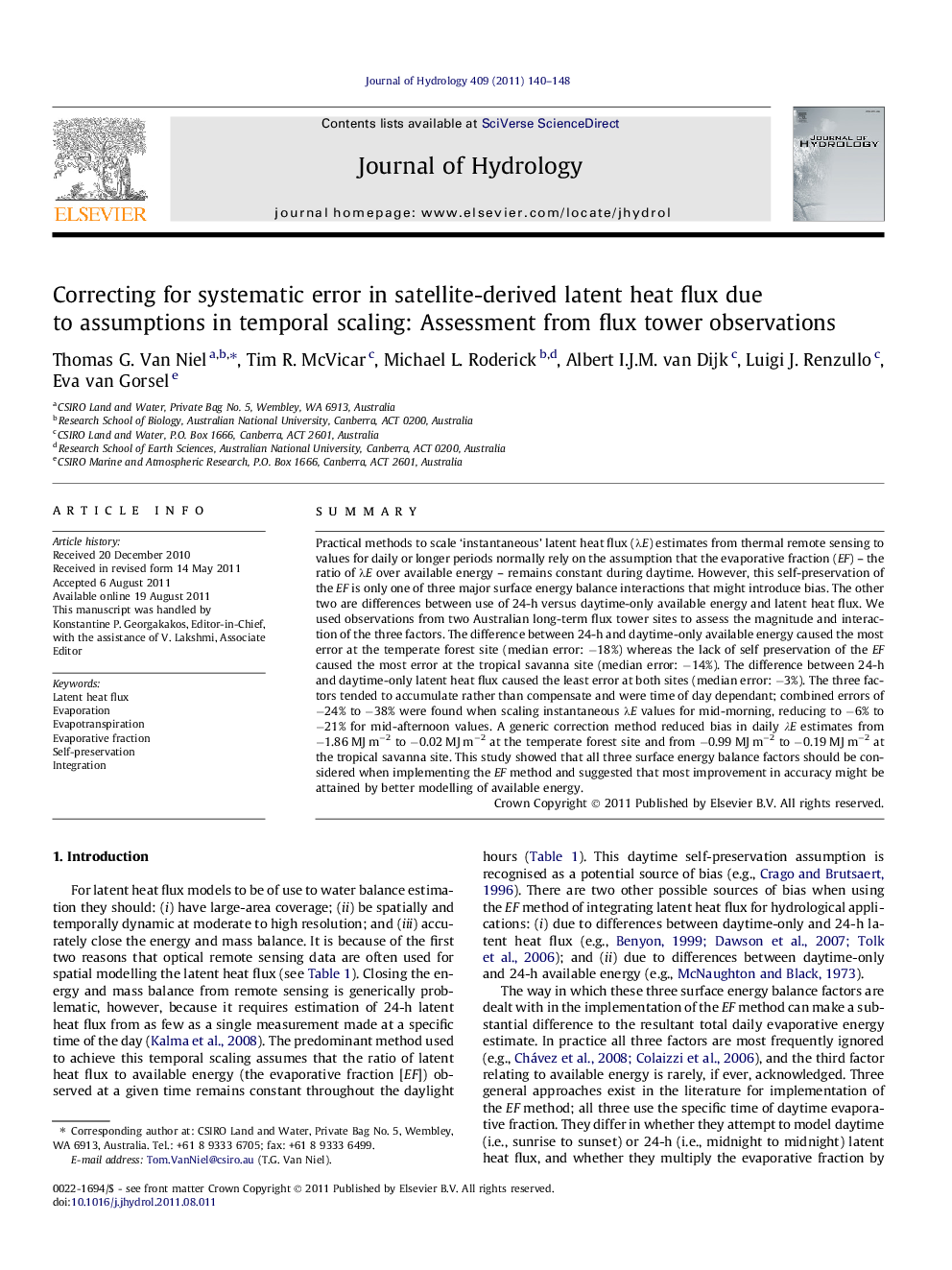| Article ID | Journal | Published Year | Pages | File Type |
|---|---|---|---|---|
| 4577477 | Journal of Hydrology | 2011 | 9 Pages |
SummaryPractical methods to scale ‘instantaneous’ latent heat flux (λE) estimates from thermal remote sensing to values for daily or longer periods normally rely on the assumption that the evaporative fraction (EF) – the ratio of λE over available energy – remains constant during daytime. However, this self-preservation of the EF is only one of three major surface energy balance interactions that might introduce bias. The other two are differences between use of 24-h versus daytime-only available energy and latent heat flux. We used observations from two Australian long-term flux tower sites to assess the magnitude and interaction of the three factors. The difference between 24-h and daytime-only available energy caused the most error at the temperate forest site (median error: −18%) whereas the lack of self preservation of the EF caused the most error at the tropical savanna site (median error: −14%). The difference between 24-h and daytime-only latent heat flux caused the least error at both sites (median error: −3%). The three factors tended to accumulate rather than compensate and were time of day dependant; combined errors of −24% to −38% were found when scaling instantaneous λE values for mid-morning, reducing to −6% to −21% for mid-afternoon values. A generic correction method reduced bias in daily λE estimates from −1.86 MJ m−2 to −0.02 MJ m−2 at the temperate forest site and from −0.99 MJ m−2 to −0.19 MJ m−2 at the tropical savanna site. This study showed that all three surface energy balance factors should be considered when implementing the EF method and suggested that most improvement in accuracy might be attained by better modelling of available energy.
► Three assumptions are made in the evaporative fraction method; each cause bias. ► When considered together, the three biases accumulated rather than compensated. ► The largest relative error occurred in the morning. ► A generic correction method was developed that minimised the combined bias. ► Most improvement in accuracy was attained by correcting bias in available energy.
